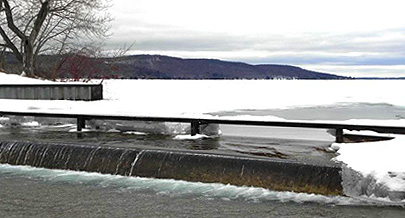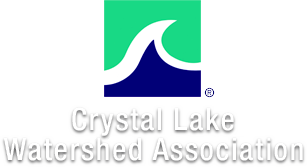Watershed Management Plan

Click HERE to access the Betsie River/Crystal Lake Watershed Plan.
Thanks to CLWA volunteers and interns, the Betsie River/Crystal Lake Watershed Management Plan (WMP) was completed in the spring of 2016. This important document proposes a number of priorities to preserve and improve the water quality of Crystal Lake, and will help guide CLWA’s future actions:
Among the most significant recommendations:
- Demonstration projects to promote natural shoreline management;
- Management practices to reduce erosion at Bellows Road and other road ends;
- Identifying and protecting important viewsheds, including forested hillsides;
- Developing a comprehensive strategy for aquatic and terrestrial invasive species;
- Increased monitoring of biology in stream and shoreline areas;
- Research funding and action to manage Swimmer’s Itch;
- Improved lake-level control;
- Continued E. coli monitoring on public beaches;
- Preservation of existing wetlands and public education as to the function of wetlands;
- Development of clear education and enforcement procedures for use of holding tanks;
- Addressing the significant run-off, nutrient and E. coli issues in and around the village of Beulah and Cold Creek.
CLWA worked with Networks Northwest (formerly the Northwest Michigan Council of Governments), Grand Traverse Regional Land Conservancy, Friends of Betsie Bay, Green Lake Duck Lake Association, Conservation Resource Alliance, Benzie Conservation District and others to secure a major grant from the Michigan Department of Environmental Quality and produce the plan. CLWA acted as the primary subcontractor, CLWA president Joel Buzzell chaired the Steering Committee, and CLWA Past President Ed Hoogterp worked with Networks Northwest to write the plan.
To help provide information for the WMP, a 12-page questionnaire was mailed to 1,000 property owners in the watershed. Respondents rated water quality very highly, but had some concerns about fish habitat. Swimmer’s itch was identified as the most severe problem, followed by invasive species and pesticides.
One major component of the planning process was to create a “shoreline conditions inventory” for Crystal Lake. CLWA volunteers and two summer interns cruised the lake’s entire 22-mile shoreline and made note of such conditions as natural shorelines, erosion, seawalls, and greenbelts. This project resulted in nearly 1,000 photographic images, each with GPS coordinates embedded. The images and corresponding information sheets provide “baseline data” to show how the shoreline fares over the coming years.
In another segment of the work, staff from the Conservation Resource Alliance inspected all of the road-stream crossings in the watershed to look for erosion, fish passage problems and other issues. Their findings are online at: http://www.northernmichiganstreams.org/betsieriverws.asp
 Protecting Crystal Lake Now for Generations to Come.
Protecting Crystal Lake Now for Generations to Come.
P.O. Box 89 • Beulah, MI 49617
info@crystallakewatershed.org
231.882.4001 Tel
The Crystal Lake Watershed Association (CLWA), is a non-profit (501c3) organization.
Photography: Jay Burt and Rick Cosaro
Site by: Rick Cosaro
